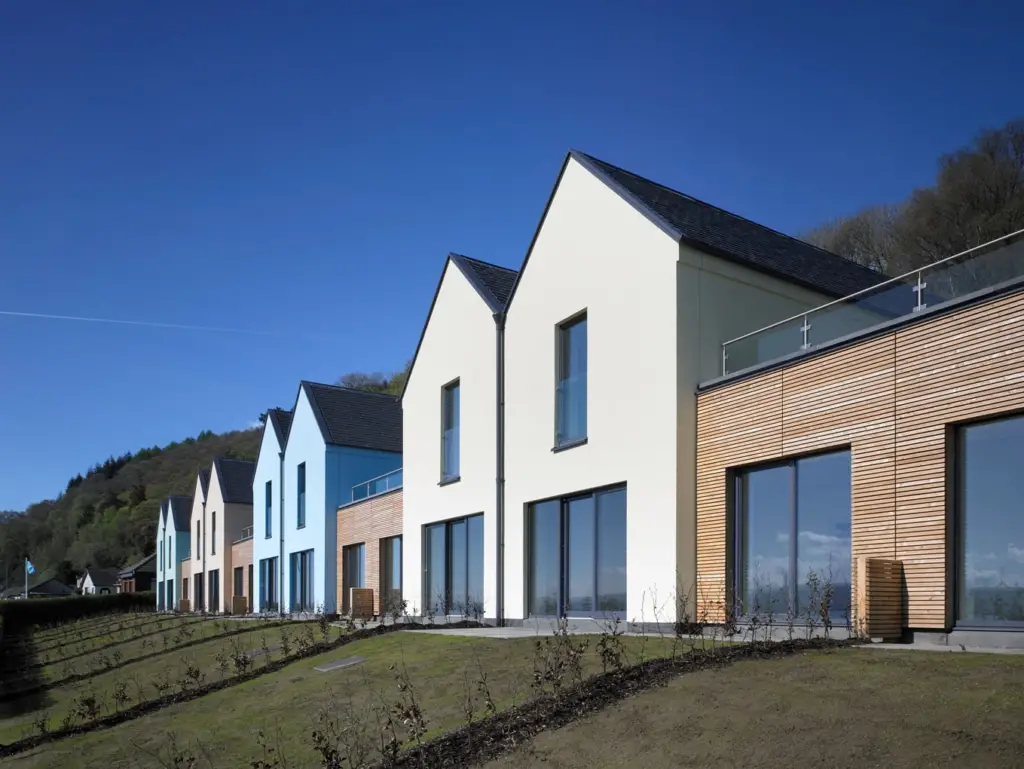Reviewed by Godfrey Ogbo
We can apply environmental ethics to home construction by using sustainable materials, utilizing energy efficiency, practicing waste reduction, etc.
Environmental ethics in home construction is a philosophy that seeks to balance the human need for shelter with ethical responsibilities towards the environment.
It encompasses a range of principles, including sustainability, responsible resource management, and long-term ecological thinking.
At its core, environmental ethics challenges us to question traditional construction practices and embrace innovative, eco-conscious alternatives.
By adopting environmental ethics, builders and homeowners acknowledge their duty to minimize their ecological footprint. This means considering the environmental consequences of their decisions, from the initial architectural designs to the final touches on a home.
A shift in mindset fosters a more harmonious relationship between humans and their surroundings.
The foundation of environmental ethics in home construction rests on several fundamental principles:
1. Sustainability

Environmental ethics compels us to seek sustainable solutions in every aspect of home construction. This involves using materials and practices that minimize environmental harm and maximize long-term benefits.
2. Responsible Resource
Ethical construction requires responsible resource management, including careful selection and use of materials, energy, and water.
3. Long-Term Thinking
Environment ethics encourages us to think beyond the present moment. It challenges us to consider how our construction choices will affect future generations and the planet’s health.
4. Ecological Impact
Builders and homeowners must evaluate the ecological impact of their decisions, from the initial design to the final construction phase. This means considering factors like habitat disruption, energy consumption, and waste generation.
Sustainable Materials and Their Impact
Choosing materials is a critical pillar in environmental ethics applied to home construction. Sustainable materials are not just buzzwords but the building blocks of a greener, more ethical future.
When chosen thoughtfully, sustainable materials can significantly reduce a construction project’s environmental footprint. Here’s how they align with the principles of environmental ethics:
1. Resource Conservation
Sustainable materials are often sourced from responsibly managed forests or reclaimed from other structures. They reduce the demand for virgin resources, a fundamental aspect of ethical construction.
Builders minimize deforestation and resource depletion using reclaimed wood or recycled steel, demonstrating a commitment to environmental ethics.
2. Energy Efficiency
Sustainable materials tend to have lower embodied energy, meaning less energy is required for production and transportation.
This reduction in energy consumption directly aligns with the ethical principle of minimizing environmental harm. Less energy-intensive materials result in a smaller carbon footprint, creating a more sustainable construction process.
3. Durability and Longevity
Ethical construction goes beyond just the environmental impact during the building phase; it considers the long-term implications.
Sustainable materials often exhibit superior durability, reducing the need for frequent replacements or repairs. This not only saves resources but also reduces waste over the lifespan of the home.
4. Low Emissions
Environmentally ethical materials often have low or no VOC emissions (Volatile Organic Compounds). This ensures that the indoor air quality remains healthy for occupants, aligning with the ethical principle of providing a safe and healthy living environment.
5. Local Sourcing
Choosing locally sourced sustainable materials reduces transportation-related carbon emissions. It supports local economies and communities, echoing the ethical principle of responsible resource management that extends beyond the construction site.
6. Aesthetic Appeal
Sustainable materials often possess unique and aesthetically pleasing qualities. This aligns with the idea that ethical construction can be both environmentally responsible and visually appealing, dispelling that moral choices require sacrifices in style or design.
Energy Efficiency and Ethical Living
Energy efficiency is a cornerstone of environmental ethics in home construction, and its ethical implications reach far beyond simply reducing utility bills.
By focusing on energy efficiency, we align our living spaces with our moral responsibility to minimize environmental impact.
Here’s how energy efficiency harmonizes with the principles of environmental ethics:
1. Minimizing Energy Consumption
Ethical construction prioritizes designs and technologies that minimize energy consumption. This means considering factors like insulation, energy-efficient windows, and HVAC systems.
By reducing energy usage, homeowners save money and demonstrate their commitment to responsible resource management.
2. Renewable Energy Integration
Embracing renewable energy sources, such as solar panels or wind turbines, epitomizes ethical living in the modern world. By harnessing the power of the sun or wind, homeowners reduce their reliance on fossil fuels and contribute to a cleaner and more sustainable energy grid.
3. Passive Design Principles
Passive design principles emphasize using natural elements like sunlight and ventilation to reduce the need for artificial heating and cooling. This aligns with ethical construction by creating comfortable homes while minimizing energy consumption and environmental harm.
4. Long-Term Savings
Ethical living is about making choices that benefit the present and future generations. Energy-efficient homes are an embodiment of this principle. They not only save homeowners money over time but also reduce the overall carbon footprint of a household for generations to come.
5. Technological Innovation
Environment ethics encourages the adoption of innovative technologies that enhance energy efficiency. Smart home systems, for example, allow homeowners to monitor and control energy usage, promoting responsible and conscious living.
6. Reduced Emissions
By minimizing energy consumption, energy-efficient homes release fewer greenhouse gas emissions. This directly contributes to the ethical imperative of reducing environmental harm and combating climate change.
Reduction and Recycling of Waste
Regarding environmental ethics in home construction, responsible waste management and recycling are pivotal. These practices not only minimize the environmental impact of construction, but also align with the ethical principle of reducing harm to the environment.
Here’s a closer look at how waste reduction and recycling play a crucial role in ethical construction:
1. Minimizing Construction Waste
Ethical construction begins with a commitment to minimizing waste during the building process. This involves careful planning, precise measurements, and efficient use of materials.
Builders should order only what’s necessary and avoid overages, reducing the need for excess materials that might end up as waste.
2. Recycling Construction Materials
Recycling construction materials, such as concrete, steel, glass, and even wood, is a fundamental practice of environmental ethics. Rather than sending these materials to landfills, they can be repurposed or recycled, conserving resources and reducing the burden on waste disposal sites.
3. On-Site Recycling

Builders can establish recycling systems on construction sites, segregating materials like metals, plastics, and paper for recycling. This practice showcases an ethical commitment to reducing waste and sets an example for responsible resource management.
4. Reclaimed Materials
Incorporating reclaimed or salvaged materials into construction projects is a hallmark of ethical building. It gives new life to materials that would otherwise be discarded, reducing the demand for new resources.
5. Responsible Demolition
In cases where existing structures are being demolished to make way for new construction, ethical practices involve deconstruction rather than outright demolition.
This approach involves carefully disassembling systems to salvage materials for reuse, minimizing waste.
6. Consumer Awareness
Ethical construction extends beyond builders to homeowners. Homeowners should be aware of the potential waste generated during renovations or upgrades and try to recycle or repurpose materials whenever possible.
7. Environmental Impact Assessment
Ethical construction also involves evaluating the environmental impact of construction activities, including waste generation. This assessment ensures that responsible waste management practices are incorporated from the planning stages.
Ethical Home Aesthetics
Ethical home design goes beyond aesthetics, encompassing living spaces prioritizing human well-being and ecological harmony. In this section, we’ll delve into how honest home design aligns with the principles of environmental ethics:
1. Natural Lighting and Ventilation
Ethical home design often prioritizes maximizing natural lighting and ventilation. This reduces the need for artificial lighting and air conditioning and enhances the well-being of occupants. It aligns with the ethical principle of creating a healthy living environment.
2. Non-Toxic Materials
Environment ethics in home design calls for using non-toxic building materials and finishes. These materials contribute to better indoor air quality, supporting the ethical goal of providing a safe and healthy living space.
3. Incorporating Green Spaces
Ethical home design integrates green spaces and gardens, both indoors and outdoors. This adds to the home’s aesthetics and improves air quality, biodiversity, and a sense of connection with nature.
4. Efficient Use of Space
Responsible use of space is a crucial aspect of ethical home design. It involves optimizing layouts to minimize wasted space and reduce the overall environmental footprint of the home.
5. Adaptability and Longevity
Ethical home design considers the adaptability of spaces to accommodate changing needs over time. This reduces the need for significant renovations or demolitions, aligning with the moral principle of long-term thinking.
6. Water Conservation
Responsible home design includes water-efficient fixtures and landscaping practices that minimize water consumption. This reflects a commitment to ethical living by conserving a precious resource.
7. Access to Nature
Ethical home design often provides easy access to natural elements, such as views of greenery or outdoor spaces. This connection with nature promotes well-being and supports the moral idea of coexisting harmoniously with the environment.
8. Efficient Insulation and Energy Design
Environment ethics in home design emphasizes efficient insulation and energy-efficient designs. These aspects contribute to reduced energy consumption, lower utility bills, and a reduced carbon footprint.
Conclusion
Applying environmental ethics to home construction is not just a trend; it’s a moral imperative in our quest for a sustainable future.
As we continue to confront global environmental challenges, embracing environment ethics in home construction is a step towards a brighter, more sustainable future for all.
Related posts:
- 389 Adjectives Starting with Z (Positive Words and Others) - January 12, 2024
- 389 Adjectives Starting with Y (Positive words and Others) - January 11, 2024
- 389 Adjectives Starting with X (Positive words and Others) - January 10, 2024






